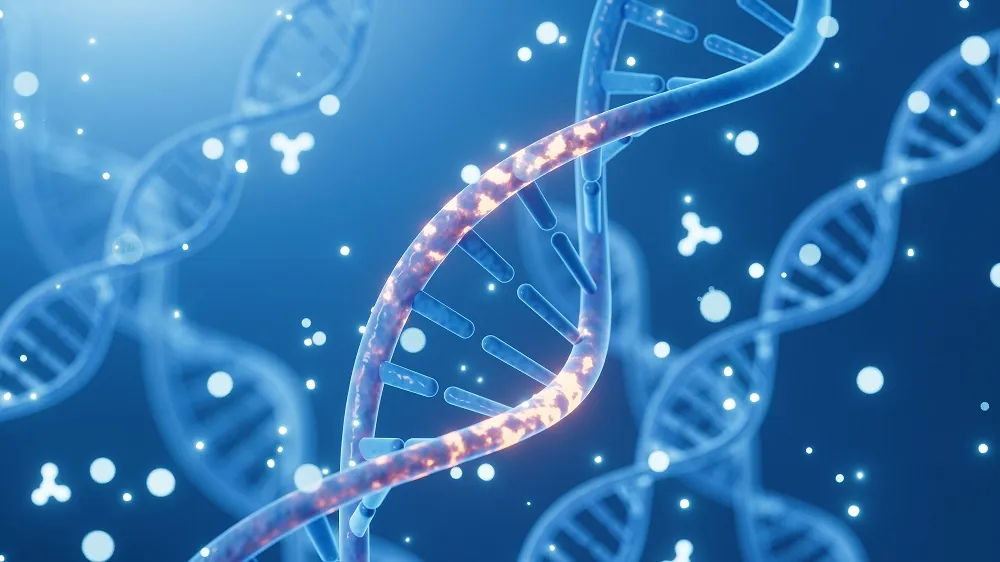Juan José Alba-Linares and his research team have published a preprint study that examined why different animals age at different rates. They found that epigenetic changes over time could explain why some animals live longer and estimated an upper limit for mammalian lifespan [1].
A problem of noise

Read More
In this study, Alba-Linare’s team analyzed the epigenetics of 18 different mammals and found that the rate at which their methylation became disorganized (noisy) matched how long those animals tend to live. For example, humans and whales have slower epigenetic changes, which might be why they can live for many decades. In contrast, mice were found to have much faster changes, which might explain their shorter lifespans.
The researchers think this could mean that there is a natural limit to how long mammals can live, and they estimate that the maximum lifespan for any mammal, including humans, might be around 220 years.
This study gives scientists a new way to think about aging. If people can figure out how to slow down the epigenetic changes that cause this noise, they might be able to find ways to help people live longer, healthier lives. However, the researchers also pointed out that more studies are needed, especially to see how epigenetic changes in different body parts besides blood and how things like diet and environment affect this process.
In summary, this research helps explain why we age by examining how our DNA changes. It also hints that there might be a natural limit to how long humans and other mammals can live, though scientists are still working to fully understand this.
Hardly uneditable
Biotechnology and medical research advancements have opened new frontiers in the quest to understand and potentially reverse aspects of aging. Among the most promising developments CRISPR-based therapies, which are currently being developed to affect the epigenome, not just the genome. These therapies could reverse or slow down the accumulation of epigenetic noise. By restoring proper DNA methylation patterns, such therapies could possibly re-establish cellular function and identity, addressing a fundamental cause of aging.
If such technology is utilized to correct age-related epigenetic changes or to reverse epigenetic drift, it could theoretically extend human lifespan beyond the predicted maximum of 220 years. This potential to extend human lifespan is not just a theoretical concept but a real possibility that could change how we perceive aging. Specifically, CRISPR-mediated methylation editing might re-establish youthful epigenetic patterns, reducing cellular noise and extending health span and lifespan. Applications of CRISPR in this context include direct epigenome editing, which involves the targeted modification of DNA methylation patterns to “reset” aging cells, and gene therapy that repairs age-related genetic mutations that accelerate entropy or contribute to age-related diseases [2].
Another groundbreaking approach is epigenetic reprogramming using the Yamanaka factors: Oct4, Sox2, Klf4, and c-Myc. This method has demonstrated the ability to reverse age-associated epigenetic changes and restore youthful cellular phenotypes. This technique could dramatically reduce epigenetic noise and entropy, extending lifespan beyond natural limits by reprogramming cells to a more youthful state [3, 4].
If applied systemically without inducing cancer, epigenetic reprogramming could reset the biological clock and significantly extend lifespan. Current research has shown that transient expression of Yamanaka factors can rejuvenate cells in mice without fully reprogramming them to an embryonic state or risking de-differentiation into other cell types, suggesting potential for safe application in humans [5].
Cell therapy involving stem cells or exosomes derived from young donors may also help rejuvenate aged tissues. These treatments could reset or slow down the aging clock in tissues by re-establishing youthful gene expression patterns and restoring epigenetic stability, possibly pushing lifespan beyond predicted limits [4].
Other approaches
Senolytics represent another promising avenue in anti-aging research. These are drugs designed to clear senescent cells, which are dysfunctional cells that accumulate with age and contribute to chronic inflammation and tissue degradation [6, 7]. By reducing the burden of senescent cells, senolytics could decrease epigenetic entropy by preventing cellular dysfunction and genomic instability.
Although they do not directly address DNA methylation, senolytics may help maintain the overall health of the cellular environment, thus slowing down the accrual of epigenetic noise. Drugs like dasatinib and quercetin are currently being tested for their ability to eliminate senescent cells and potentially extend lifespan selectively [8].
Telomere extension therapies offer yet another strategy to combat aging. Telomere shortening is a well-known hallmark of aging, and therapies based on telomerase activation aim to lengthen telomeres, extending cellular lifespan and improving overall genomic stability [9]. While this approach does not directly address epigenetic entropy, extending telomeres could help stabilize the genome, prevent cellular senescence, and mitigate age-related genomic and epigenomic changes [10]. Longer telomeres might delay the onset of epigenetic noise accumulation, which limits lifespan.
Restoration of NAD+ levels is also gaining attention in aging research. NAD+ levels decline with age, leading to compromised mitochondrial function and increased cellular stress. Therapies that replenish NAD+ levels, such as NAD+ precursors like nicotinamide riboside (NR) and nicotinamide mononucleotide (NMN), aim to improve energy metabolism and enhance DNA repair mechanisms. By restoring NAD+ levels, these therapies could reduce the accumulation of DNA damage and epigenetic drift, thereby delaying or preventing some of the processes contributing to epigenetic entropy. This would enable cells to control gene expression and longevity pathways better [11].
Lastly, caloric restriction mimetics such as rapamycin, resveratrol, and spermidine mimic the effects of caloric restriction, which has been shown to delay aging and reduce epigenetic entropy. By reducing the metabolic burden and oxidative stress on cells, these treatments could maintain epigenetic integrity for extended periods, pushing the upper limits of lifespan. These compounds aim to activate longevity pathways without significantly reducing caloric intake, making them more practical for widespread use [12-14].
Such emerging therapies and interventions offer potential avenues to slow down aging and could obviate this paper’s prediction of a maximum human lifespan based on epigenetic entropy. By directly targeting the fundamental mechanisms of aging, whether through genetic editing, epigenetic reprogramming, removal of senescent cells, telomere extension, restoration of vital molecules like NAD+, or mimicking the effects of caloric restriction, scientists are exploring ways to extend human healthspan and lifespan beyond current limitations. Continued research and development in these areas may one day redefine our understanding of aging and open the door to unprecedented longevity.
Literature
[1] José, J.; Linares, A.-; Ramón Tejedor, J.; Fernández, A.F.; Pérez, R.F.; Fraga, M.F. A Universal Limit for Mammalian Lifespan Revealed by Epigenetic Entropy. bioRxiv 2024, 2024.09.06.611669.
[2] Fadul, S.M.; Arshad, A.; Mehmood, R. CRISPR-Based Epigenome Editing: Mechanisms and Applications. Epigenomics 2023, 15, 1137–1155.
[3] Yamanaka, S. Induced Pluripotent Stem Cells: Past, Present, and Future. Cell Stem Cell 2012.
[4] Singh, P.B.; Zhakupova, A. Age Reprogramming: Cell Rejuvenation by Partial Reprogramming. Development (Cambridge) 2022, 149.
[5] Puri, D.; Wagner, W. Epigenetic Rejuvenation by Partial Reprogramming. BioEssays 2023, 45, 2200208.
[6] Chaib, S.; Tchkonia, T.; Kirkland, J.L. Cellular Senescence and Senolytics: The Path to the Clinic. Nature Medicine 2022 28:8 2022, 28, 1556–1568.
[7] Wissler Gerdes, E.O.; Zhu, Y.; Tchkonia, T.; Kirkland, J.L. Discovery, Development, and Future Application of Senolytics: Theories and Predictions. FEBS J 2020, 287, 2418–2427.
[8] Nieto, M.; Könisgberg, M.; Silva-Palacios, A. Quercetin and Dasatinib, Two Powerful Senolytics in Age-Related Cardiovascular Disease. Biogerontology 2024, 25, 71–82.
[9] Saretzki, G. Role of Telomeres and Telomerase in Cancer and Aging. International Journal of Molecular Sciences 2023, Vol. 24, Page 9932 2023, 24, 9932.
[10] Rai, R.; Sodeinde, T.; Boston, A.; Chang, S. Telomeres Cooperate with the Nuclear Envelope to Maintain Genome Stability. BioEssays 2024, 46, 2300184.
[11] Covarrubias, A.J.; Perrone, R.; Grozio, A.; Verdin, E. NAD+ Metabolism and Its Roles in Cellular Processes during Ageing. Nature Reviews Molecular Cell Biology 2020 22:2 2020, 22, 119–141.
[12] Panwar, V.; Singh, A.; Bhatt, M.; Tonk, R.K.; Azizov, S.; Raza, A.S.; Sengupta, S.; Kumar, D.; Garg, M. Multifaceted Role of MTOR (Mammalian Target of Rapamycin) Signaling Pathway in Human Health and Disease. Signal Transduction and Targeted Therapy 2023 8:1 2023, 8, 1–25.
[13] Ni, Y.; Zheng, L.; Zhang, L.; Li, J.; Pan, Y.; Du, H.; Wang, Z.; Fu, Z. Spermidine Activates Adipose Tissue Thermogenesis through Autophagy and Fibroblast Growth Factor 21. J Nutr Biochem 2024, 125, 109569.
[14] Pezzuto, J.M. Resveratrol: Twenty Years of Growth, Development and Controversy. Biomol Ther (Seoul) 2019, 27, 1–14.







